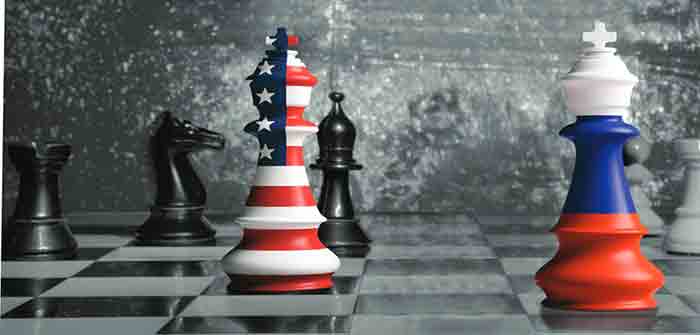
by Bernhard at Moon of Alabama
RAND Corp is a government and industry financed large research institute. Founded shortly after the end of the second world war it mostly works for the Pentagon by developing policies and strategies.
In April 2019 RAND published a report about Extending Russia (pdf).

bigger
As the 2018 National Defense Strategy recognized, the United States is currently locked in a great-power competition with Russia. This report seeks to define areas where the United States can compete to its own advantage. Drawing on quantitative and qualitative data from Western and Russian sources, this report examines Russia’s economic, political, and military vulnerabilities and anxieties. It then analyzes potential policy options to exploit them — ideologically, economically, geopolitically, and militarily (including air and space, maritime, land, and multidomain options).
RAND developed policy options in those four fields. It then evaluated their benefit, cost and risks as well as their likelihood of success.
Here is their summary table for economic measures:

bigger
The geopolitical measures included an option of providing lethal aid to Ukraine. This would create the risk that Russia would respond militarily and eventually take more of Ukraine than the two Donbas republics:
Taking more of Ukraine might only increase the burden [for Russia], albeit at the expense of the Ukrainian people. However, such a move might also come at a significant cost to Ukraine and to U.S. prestige and credibility. This could produce disproportionately large Ukrainian casualties, territorial losses, and refugee flows. It might even lead Ukraine into a disadvantageous peace.
While they at times underestimate Russia’s capabilities RAND people are not dumb. They knew of the likely outcome of a war.
Other geopolitical measure RAND evaluated included more support for ‘Syrian rebels’, regime change per color revolution in Belarus, to exploit tensions in the southern Caucasus and to reduce Russian influence in Central Asia.
RAND’s summary for geopolitical measures:…
Continue Reading